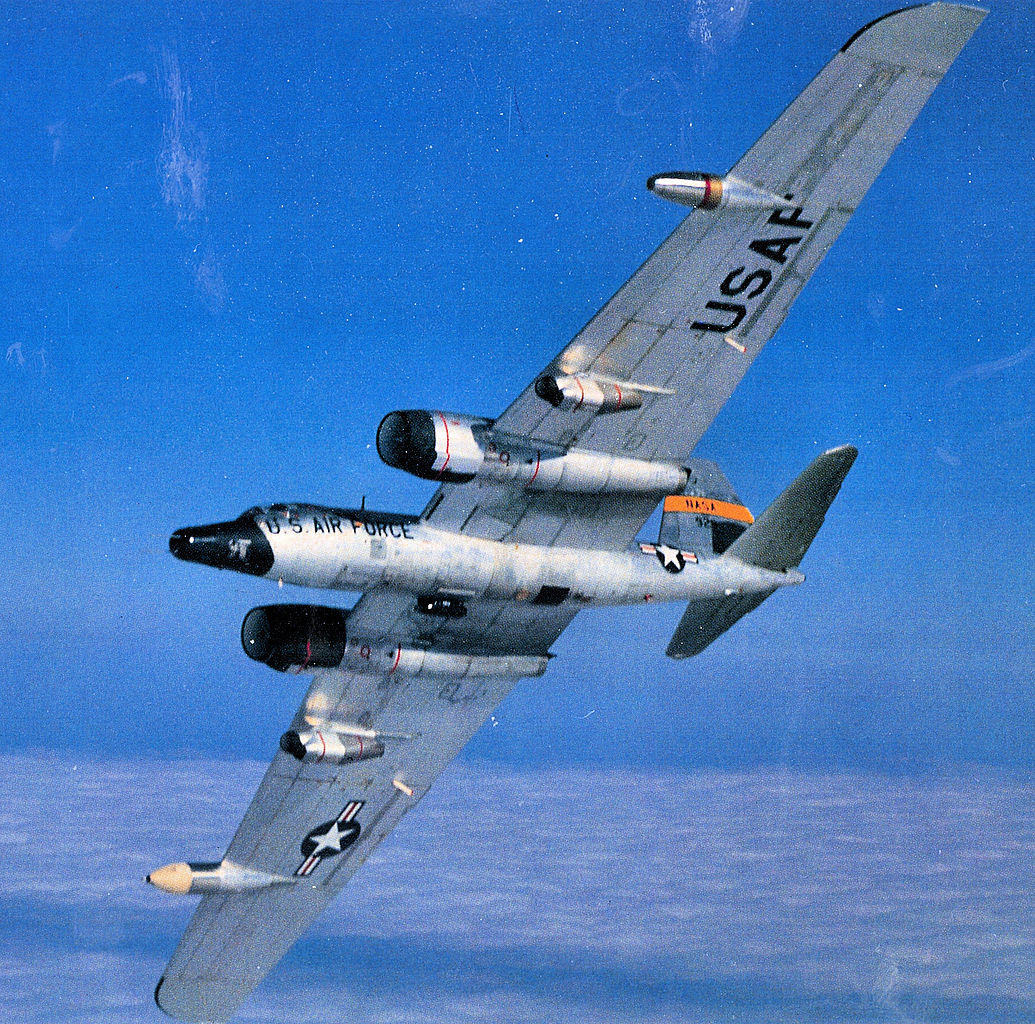
Martin/General Dynamics RB-57F October 1978 (NASA 928).
Martin B-57F in its hangar at Centennial Airport. a Martin
WB-57F Canberra which NASA pulled out of storage where it had been languishing
for around four decades and brought it back to life. The Canberra took to the
air earlier this month on its first flight since Nixon was president.
NASA currently
has two other WB-57F Canberras flying in its fleet, NASA 926 and NASA 928. Uses
for these planes have varied from filming the Space Shuttle’s launch and
re-entry, aerial surveys and collecting cosmic dust from the upper atmosphere
in addition to missions supporting US military operations overseas, the details
of which are rather murky. Whether bringing this plane out of mothballs is in
anticipation of the retirement of one of the existing NASA Canberras or an
addition to the fleet is as yet unknown.
WB-57F 63-13503 assigned to 6091st Reconnaissance
Squadron, Yokota AB, Japan.
The Martin/General Dynamics RB-57F Canberra is a specialized
strategic reconnaissance aircraft developed in the 1960s for the United States
Air Force by General Dynamics from the Martin B-57 Canberra tactical bomber,
which itself was a license-built version of the English Electric Canberra. It
was operationally assigned to the Air Weather Service for weather
reconnaissance involving high-altitude atmospheric sampling and radiation
detection in support of nuclear test monitoring, but four of the 21 modified
aircraft performed solely as strategic reconnaissance platforms in Japan and
Germany.
Three of the modified aircraft were destroyed with loss of
their crews while performing operationally. The remainder were re-designated
WB-57F in 1968. Four of the survivors were subsequently used by NASA for
high-altitude atmospheric research. The others were retired from 1972 to 1974
and placed in storage.
They’re 49 years old, ugly and owned by NASA, not the
Pentagon. But two modified WB-57F Canberras are now among America’s most
important warplanes. With anonymous-looking white paint jobs, the Canberras
have been taking turns deploying to Afghanistan carrying a high-tech new radio
translator designed to connect pretty much any fighter, bomber, spy plane and
ground radio to, well, pretty much any other fighter, bomber, spy plane and
ground radio. That makes the former Air Force reconnaissance planes, originally
transferred to the space agency for science missions, essential hubs of the
American-led war effort.
With the Battlefield Airborne Communications Node system, or BACN, the WB-57s act as Star Trek-style universal translators, passing data between planes and troops and finally bringing to life the Pentagon’s decades-old dream of speedy, information-propelled, networked warfare. “It orbits high up and basically receives various platforms’ datalink data, then translates all that data and redistributes it in a fused manner back to different platforms in the operating area,” *Aviationintel‘*s Tyler Rogoway told ace aerospace blogger David Cenciotti.
“BACN bridges the gaps,” manufacturer Northrop
Grumman boasted.
The old NASA recon planes – the only two of their kind not
yet consigned to museums – aren’t the only gap-fillers. Since 2005 the Air
Force has slowly been assembling its own hodgepodge fleet of BACN planes. And
yes, that’s pronounced “bacon.” In addition to the two NASA WB-57Fs,
the Air Force possesses three EQ-4B Global Hawk drones fitted with the radio
translator plus four similarly equipped E-11A Bombardier business jets, the
most recent of which was handed over on Thursday.
The different planes boast varying speeds, ranges and
payloads, but what they have in common is the ability to fly very high for
hours at a time, lending their electronic receivers and transmitters the
maximum possible coverage. NASA’s old WB-57s might even be the highest-flying
of the lot, with a top altitude of around 70,000 feet, high enough that the
pilots have to wear pressure suits.